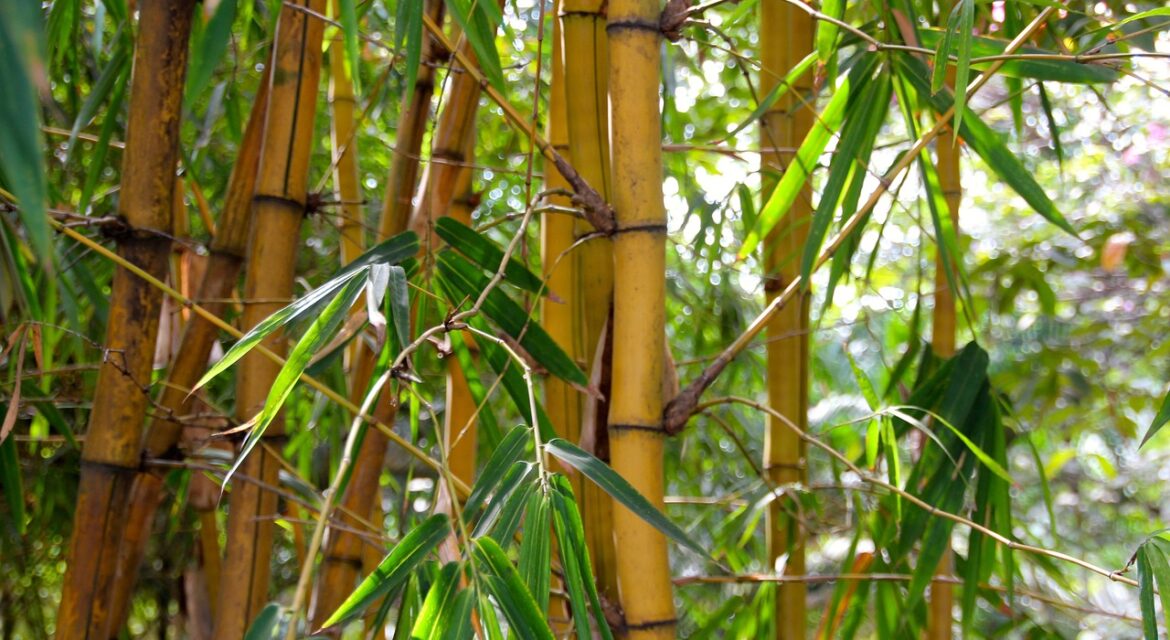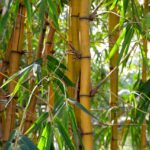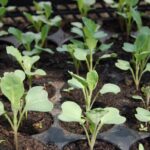Bamboo has been revered worldwide for centuries due to its versatility, fast growth, and remarkable environmental benefits. Today, Kenyan farmers are recognizing the crop’s potential as a sustainable, profitable farming option. By investing in the right bamboo seedlings, Kenyan farmers can enjoy economic benefits, contribute to environmental conservation, and support a promising industry that strengthens rural communities and promotes ecosystem health. This post dives deep into why bamboo seedlings are a great choice for Kenyan farmers, exploring the economic, environmental, and practical advantages of bamboo farming.
Bamboo Farming in Kenya
As sustainable agriculture becomes increasingly essential to meet global food security and climate goals, bamboo has emerged as a key crop with vast potential. Kenya’s rich biodiversity and varied climate make it a natural choice for bamboo farming, particularly as the crop adapts well to areas where traditional plants struggle. Access to high-quality bamboo seedlings is also growing, thanks to the expansion of local nurseries and associations dedicated to promoting bamboo farming.
The Kenya Forestry Service notes that bamboo farming can significantly impact both the economy and environment, offering solutions to deforestation and soil erosion. With climate change affecting rainfall patterns, water security, and soil quality, bamboo provides a sustainable alternative that benefits the land, supports biodiversity, and diversifies farmers’ income. Let’s explore why bamboo seedlings are a powerful investment for Kenyan farmers.
Economic Potential of Bamboo Seedlings for Kenyan Farmers
The economic benefits of bamboo farming are one of the primary drivers behind the growing interest in bamboo seedlings. Bamboo’s rapid growth, multiple uses, and strong market demand create a steady and diverse income source for farmers. Here’s how bamboo farming offers financial rewards:
A. High Yield and Quick Harvest Cycles
Certain bamboo species, such as Dendrocalamus asper and Bambusa vulgaris, grow at astonishing rates, with some varieties reaching heights of up to three feet per day under optimal conditions. Unlike traditional hardwood trees, which can take decades to mature, bamboo reaches a harvestable size within three to five years. This fast growth means farmers can quickly begin earning from their bamboo crop. Once established, a bamboo plantation can provide a renewable annual yield, as mature bamboo clumps can be harvested each year without replanting.
In addition, bamboo is highly regenerative. Harvesting bamboo doesn’t kill the plant; instead, it encourages new shoots to grow, ensuring a sustainable and continuous supply. This renewable nature makes bamboo an economically sustainable option for farmers, providing regular income and lowering costs over time.
B. Diverse Market Opportunities
Bamboo’s versatility translates into multiple income streams for farmers. As awareness of bamboo’s uses grows, so does demand for bamboo poles, shoots, and bamboo-based products. Kenyan farmers can benefit from this diversity in several ways:
- Construction and Furniture: Bamboo is a strong, lightweight material ideal for furniture and structural uses. Builders and carpenters in Kenya are increasingly using bamboo for eco-friendly construction materials, boosting demand for high-quality poles.
- Crafts and Handicrafts: Bamboo’s smooth, durable stems are perfect for carving, making it popular in the crafts sector. Bamboo can be used to make baskets, mats, and decorative items, which are in high demand both locally and abroad.
- Food and Biofuel: Certain bamboo species produce edible shoots, which are a delicacy in parts of Asia and are starting to gain traction in Kenya. Additionally, bamboo can be converted into biofuel, which is an eco-friendly alternative to traditional fuels.
- Textiles and Paper: Bamboo fiber is soft, durable, and increasingly used in textiles. Bamboo can also be processed into paper, adding yet another market avenue for farmers.
C. Government Support and Market Development
The Kenyan government, along with environmental organizations, has acknowledged bamboo’s potential for both economic growth and environmental restoration. Through support programs, grants, and training, these initiatives are making bamboo farming more accessible. Farmers can benefit from training programs in sustainable bamboo farming, financing options for initial setup, and market linkage assistance. As the government continues to invest in bamboo, Kenyan farmers will have access to more resources and incentives to start or expand their bamboo plantations.
Environmental Benefits of Bamboo Farming
Bamboo is often called “nature’s gift to the environment” for a reason. Its impressive environmental benefits are particularly valuable in Kenya, where issues like climate change, deforestation, and soil degradation are major concerns. Here’s how bamboo farming can help mitigate these issues:
A. Soil Stabilization and Erosion Control
Bamboo’s dense and extensive root system plays a crucial role in stabilizing soil and preventing erosion. Bamboo is especially effective in sloped or erosion-prone areas, where soil loss from rainfall and wind is common. Once bamboo seedlings establish roots, they form a complex network that holds the soil in place, reducing runoff and preserving vital nutrients.
This natural erosion control can help regenerate degraded land, making bamboo an excellent choice for regions that have suffered from overgrazing or deforestation. Soil stabilization also reduces the risk of landslides in highland areas, making bamboo an invaluable crop for Kenyan farmers in these regions.
B. Carbon Sequestration
Climate change is a pressing issue globally, and bamboo is a powerful ally in combating it. Bamboo absorbs approximately 35% more carbon dioxide than most trees, making it one of the most efficient carbon sinks in the plant world. Bamboo also releases about 30% more oxygen than equivalent trees, improving air quality and contributing to climate resilience.
Kenyan farmers who plant bamboo are not only investing in a profitable crop but also playing an essential role in carbon offsetting efforts. By absorbing CO₂ and releasing oxygen, bamboo plantations help balance greenhouse gas levels, making them valuable assets in Kenya’s climate change mitigation strategies.
C. Water Conservation
Bamboo is naturally drought-resistant and has a high water-use efficiency. While traditional crops may struggle in regions with inconsistent rainfall, bamboo’s ability to retain water within its root structure helps maintain soil moisture, supporting healthier soil and reducing irrigation needs. By choosing drought-tolerant bamboo species, farmers can grow a successful bamboo crop even in drier climates, saving water and fostering sustainable land use.
Practical Advantages of Bamboo for Kenyan Farmers
Beyond its economic and environmental benefits, bamboo is a practical crop for Kenyan farmers looking for resilient and sustainable agricultural solutions. Here’s why bamboo seedlings are well-suited to Kenya’s diverse farming conditions:
A. Low Maintenance Requirements
Once bamboo seedlings are established, they require minimal upkeep. This low maintenance feature makes bamboo an ideal option for smallholder farmers or farmers with limited resources. Farmers can save on labor and input costs, as bamboo is relatively self-sustaining and can grow with little interference. This resilience also makes bamboo suitable for intercropping, allowing farmers to grow bamboo alongside other crops, maximizing land use without excessive labor.
B. Resilience to Pests and Diseases
Compared to many other crops, bamboo has fewer issues with pests and diseases. This natural resistance minimizes the need for pesticides, reducing costs and supporting organic farming practices. For farmers focused on eco-friendly agriculture, bamboo provides an ideal crop option that aligns with organic and sustainable principles.
C. Adaptability to Various Climates and Soils
Kenya’s diverse climate zones range from humid coastal regions to arid landscapes. Fortunately, different bamboo species can adapt to various environments. For example, Bambusa vulgaris thrives in warmer, coastal climates, while other drought-resistant varieties are well-suited to Kenya’s drier areas. This adaptability makes bamboo an inclusive option for farmers across Kenya, regardless of local climate and soil conditions.
4. Choosing the Right Bamboo Varieties
Selecting the right bamboo species is key to maximizing yield and market potential. Some of the most popular bamboo species for Kenyan farmers include:
- Dendrocalamus asper: Known for its large, thick stems, this species is ideal for construction and furniture-making.
- Bambusa vulgaris: A popular and versatile variety, it’s suitable for landscaping, construction, and edible shoots.
- Gigantochloa atroviolacea (Black Bamboo): Known for its distinctive dark color, black bamboo is highly sought after in the furniture and ornamental plant markets.
Each species has unique characteristics suited to different uses and climates. Farmers can consult with bamboo nurseries and local experts to choose the best variety for their goals and environmental conditions.
Step-by-Step Guide to Starting Bamboo Farming in Kenya
Starting a bamboo plantation requires a few essential steps to ensure the plants’ success and future profitability. Here’s how to get started:
Step 1: Conduct Research and Choose Your Bamboo Species
Investigate the bamboo varieties suited to your area and farming goals. Consulting with local bamboo experts or nurseries is valuable, as they can provide insights into the best species for your location and market.
Step 2: Prepare Your Land and Plant Seedlings
Land preparation includes clearing weeds, loosening soil, and creating suitable planting holes. Bamboo seedlings thrive when planted during the rainy season, as this maximizes water availability for root establishment.
Step 3: Provide Initial Care for Seedlings
While bamboo is low-maintenance, initial care is essential. Farmers should apply a layer of mulch around each plant to conserve soil moisture, particularly in arid regions. It’s also a good practice to check for any early signs of stress, though bamboo is generally resilient.
Step 4: Harvest and Market Your Bamboo
Depending on the species, bamboo can be ready for harvest in 3-5 years. Mature bamboo can be harvested annually, making it a dependable source of income. Farmers can sell bamboo directly to markets or connect with buyers in industries like construction, furniture, and textiles.
Broader Economic and Environmental Benefits
The positive impacts of bamboo farming extend beyond the individual farmer. The bamboo industry in Kenya has significant potential to drive rural employment, stimulate development, and open new export opportunities:
- Job Creation: Bamboo farming and processing create employment in harvesting, transport, processing, and product manufacturing.
- Biodiversity Conservation: Bamboo plantations provide habitats for various wildlife species, promoting biodiversity.
- Export Potential: As global demand for sustainable products increases, Kenya could benefit from exporting bamboo products, boosting foreign exchange earnings.
Conclusion
Bamboo seedlings represent an opportunity for Kenyan farmers to diversify their income, protect the environment, and contribute to a sustainable agricultural future. With its quick growth, low maintenance requirements, and adaptability, bamboo is a crop that fits well within Kenya’s farming landscape. For Kenyan farmers seeking a resilient, profitable, and environmentally friendly option, bamboo offers a solution with both immediate and long-term rewards.
Are you interested in starting your bamboo farming journey? Connect with local with us today.




